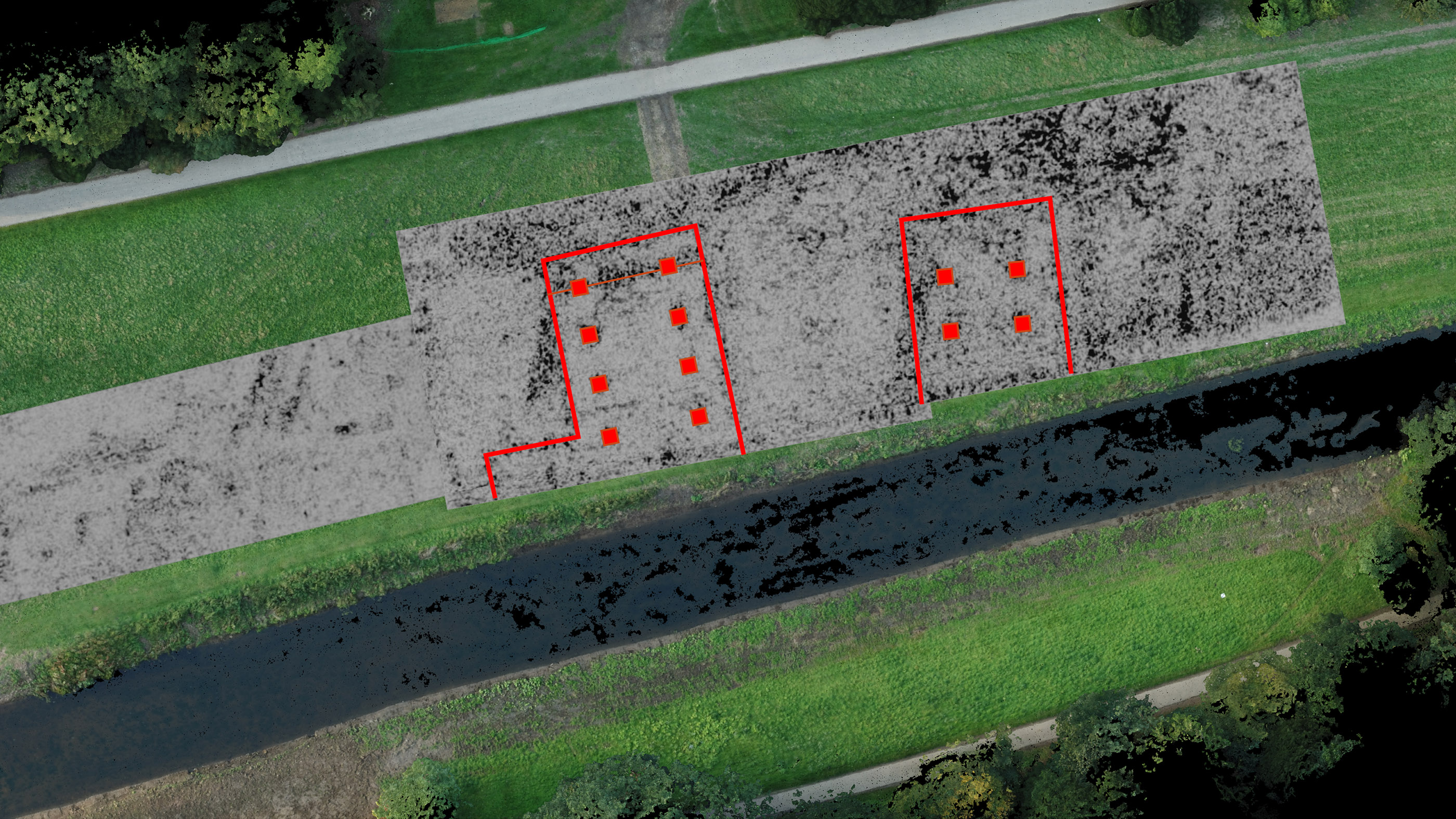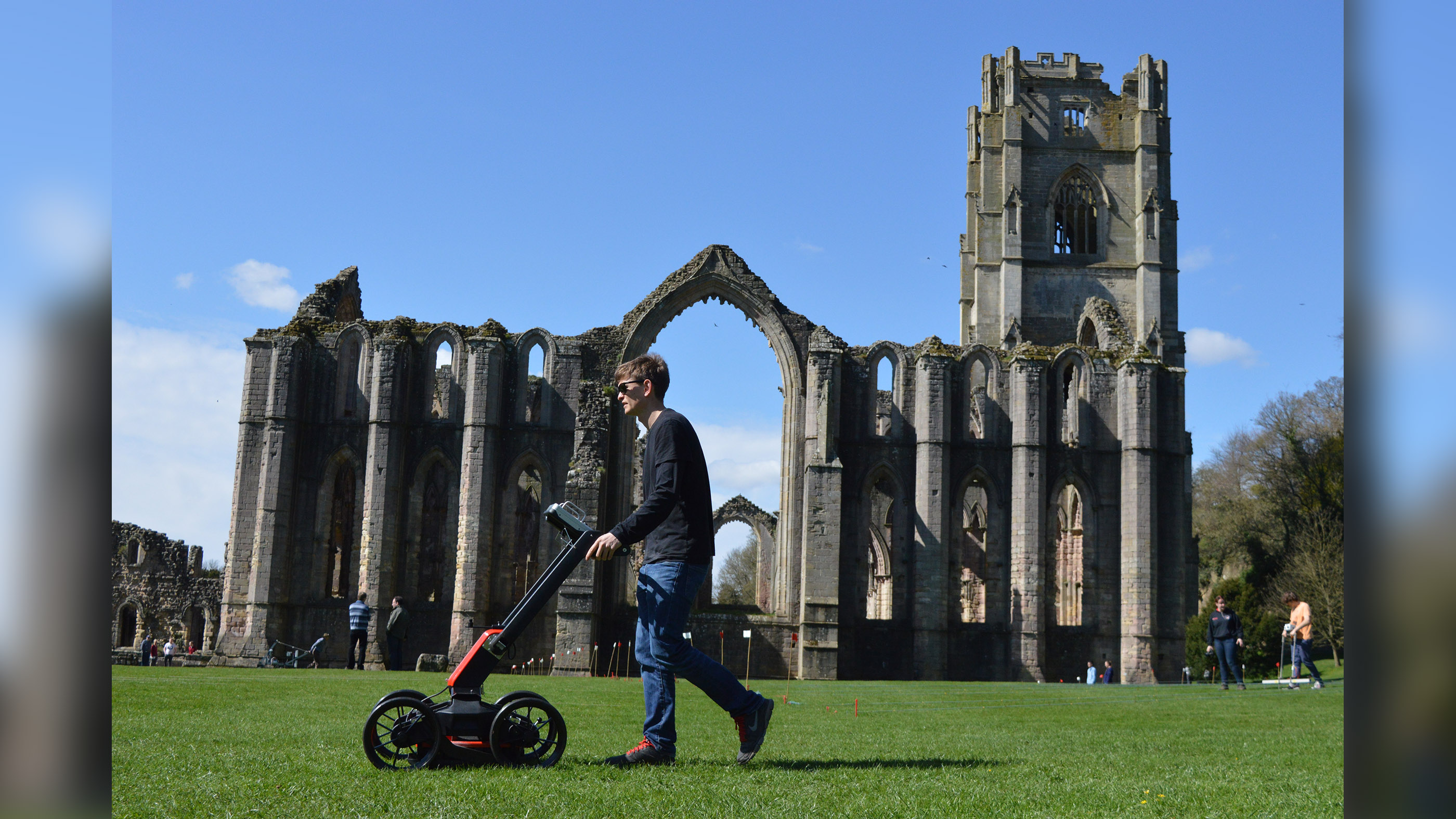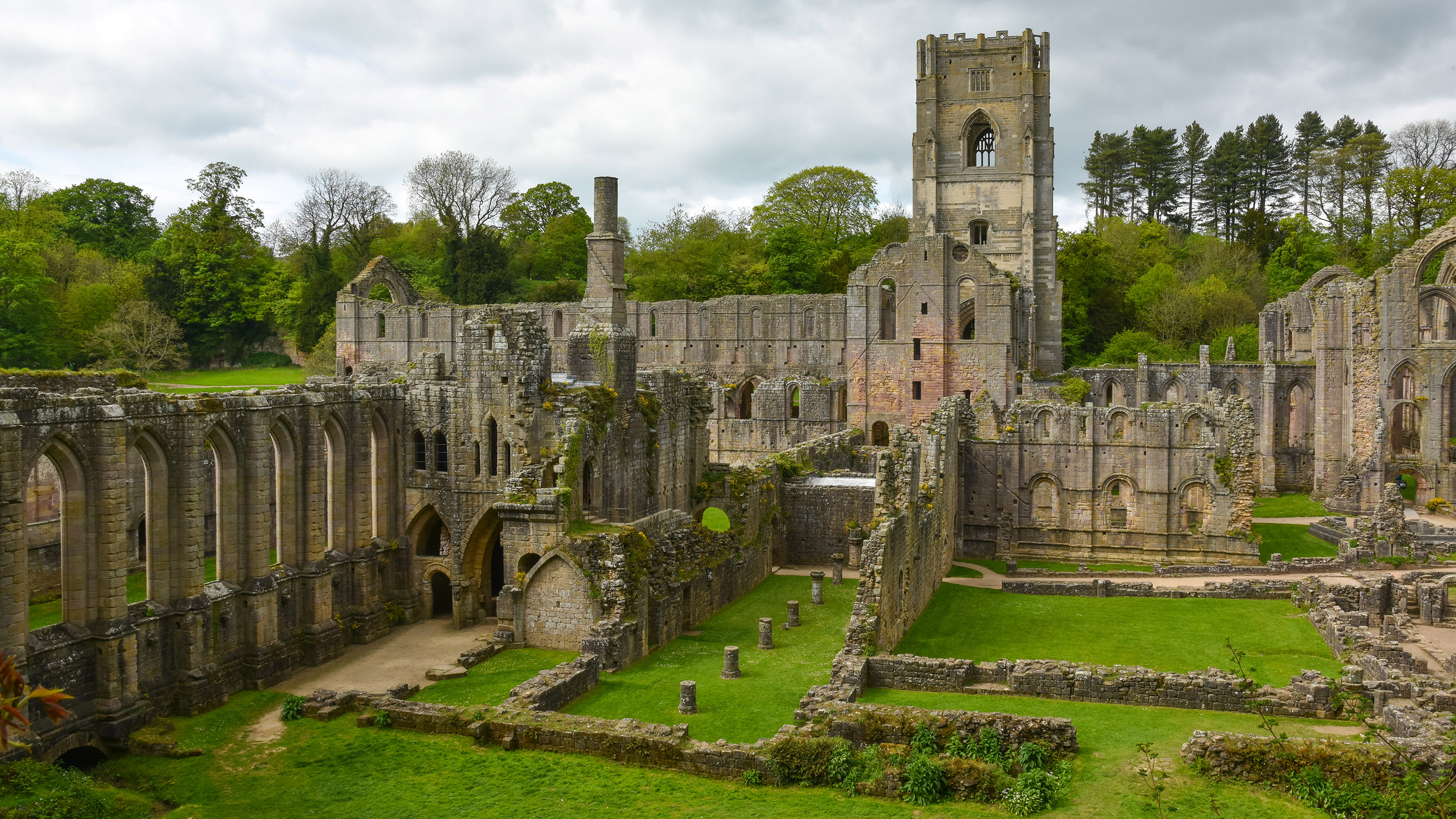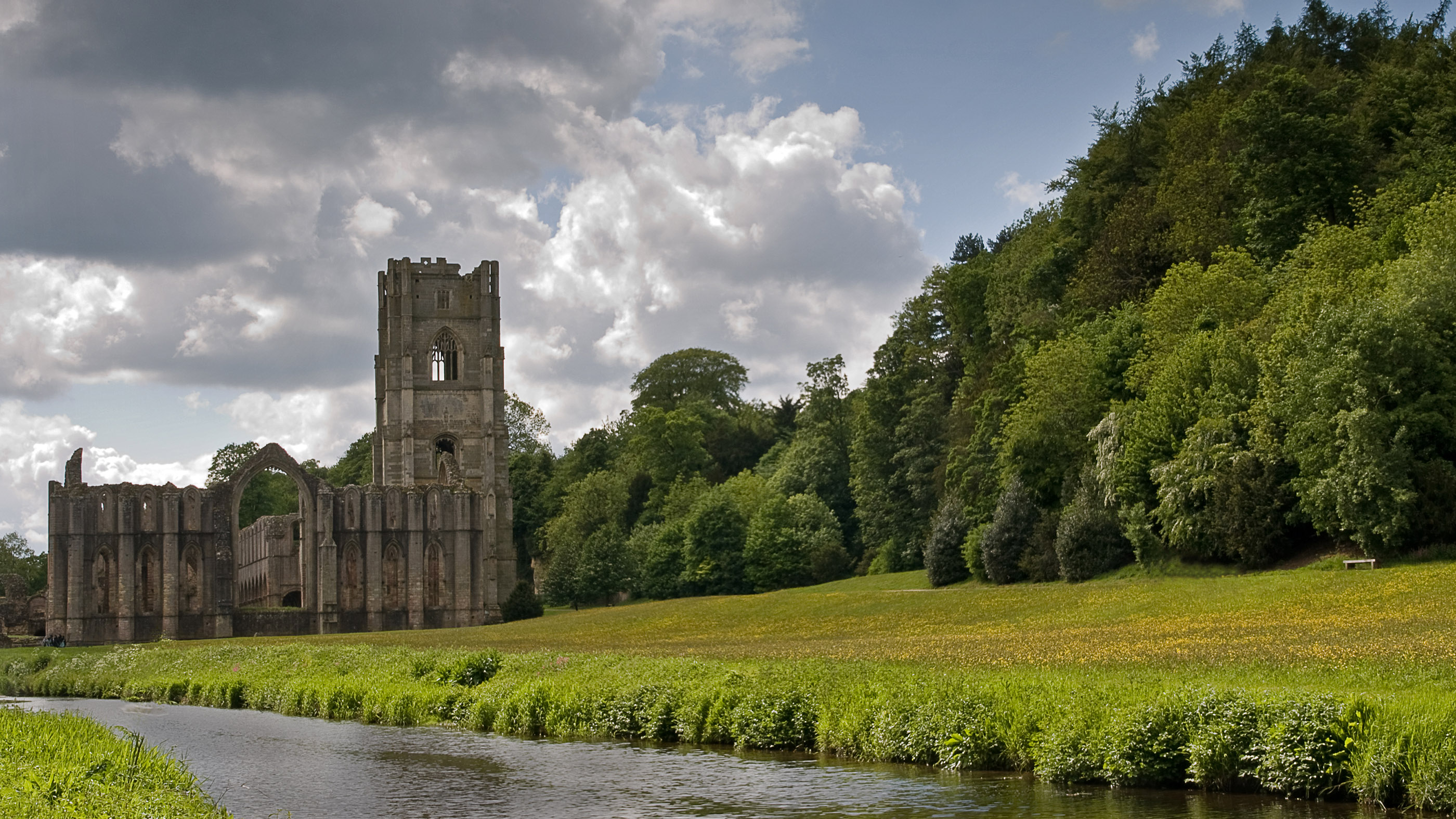Archaeologists solve mystery of 'bowling alley' under Yorkshire abbey
Medieval structure hidden beneath Fountains Abbey revealed.

One of the most tranquil spots in England — the spectacular ruins of Fountains Abbey in Yorkshire — was a hubbub of industrial activity in its heyday during the medieval period, according to new research.
Archaeologists have discovered that the mysterious underground "bowling alley" structure just to the east of the ruined abbey is the buried remains of a medieval tannery, where monks and lay brothers processed animal hides into leather — a major profit-making center that would have employed hundreds of people.
"This changes the perception of the site," archaeologist Chris Gaffney of the University of Bradford in England told Live Science. Although the modern view is of beautiful abbey ruins, "actually it was an area that was very much focused on industry, quite noisy and quite smelly."
Related: The 25 most mysterious archaeological finds on Earth
Gaffney and his colleagues have explored the ruins of Fountains Abbey since 2014, often using them to train archaeological students in non-invasive mapping techniques like magnetic surveys and ground-penetrating radar.
The long bowling alley-shaped structure was first detected a few years ago in a geophysical survey, which detected minute changes in the Earth's magnetic field that revealed where the buried ground had been disturbed in the past, Gaffney said.
Now, recent work with ground-penetrating radar has established that the tannery once covered the entire width of the valley floor around the abbey, according to a statement from the university.
Sign up for the Live Science daily newsletter now
Get the world’s most fascinating discoveries delivered straight to your inbox.
It included two substantial stone buildings, one of them at least 100 feet (30 meters) long and more than a single story tall, with lined pits, tanks and other structures around them. The buildings were also beside the River Skell that still runs through the valley, which would have provided the water needed by the tannery, the statement said.

Wealthy monastery
Fountains Abbey was founded in A.D. 1132 by 13 Benedictine monks who had been expelled from an abbey in the city of York after a riot there. They joined the Cistercian order of monks the year after that, and the establishment grew into one of the wealthiest monasteries in England.
Records show that about 60 monks were living there by A.D. 1170, as well as about 200 lay brothers — often skilled craftsmen, such as stonemasons, smiths and tanners, who were essential to the economy of the abbey but who were not educated enough to take holy orders.
Fountains Abbey operated for more than 400 years, during which time it became an extensive landowner, with many farms for sheep and cattle scattered throughout the region, Gaffney said.

But in 1539, the English crown seized the abbey and all its lands during the dissolution of the monasteries by Henry VIII — a successful effort to break the economic power of the Catholic church in England — and sold the lands off to friends of the king.
The monks were sent away and the abbey building — an architectural marvel — was stripped of stone, timber and lead for sale as building materials, according to the National Trust, an English heritage charity that now owns the site.
Gaffney said it seemed Henry VIII's agents were not interested in keeping the tannery going, and the new research shows it was eventually burned to the ground.

Industrial activity
The existence of the medieval tannery at the site is supported by records from the time, Gaffney said.
"We know that there are processing hides on the site," he said. "This was an immensely wealthy abbey, and their wealth came from animals."
The tannery would have used animal hides from the abbey's many farms, removing the hair, degreasing them, and curing the skin with an acidic compound found in tree bark called tannin, which gives the process its name.
Sometimes hides were partially putrefied during the process, and some treatments used urine and dung, which contributed to the terrible smell that tanneries are infamous for.
Eventually, the leather from the medieval tannery would have been used for clothing, furnishings, bedding, bookbinding and the vellum or parchment that the monastic scribes used to copy religious texts, Gaffney said.
"They used it for everything," he said. "In that period, there wasn't a bit of an animal that couldn't be used, one way or another."
Now that archaeologists have determined the purpose of the mysterious structures, there are no plans to excavate them, and they will remain buried, he said.
"The area it is on is part of a very beautiful approach to the abbey," he said. "I imagine the National Trust will feel comfortable knowing what's down there, without necessarily having to dig it up."
Originally published on Live Science.
Editor's note: This article has been updated to indicate the English crown seized the abbey in 1539, not 1559 as had been previously stated.
Tom Metcalfe is a freelance journalist and regular Live Science contributor who is based in London in the United Kingdom. Tom writes mainly about science, space, archaeology, the Earth and the oceans. He has also written for the BBC, NBC News, National Geographic, Scientific American, Air & Space, and many others.









